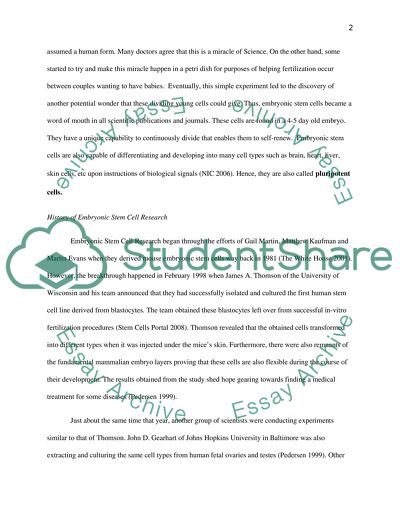Cite this document
(“Human Embryonic Stem Cell Research Essay Example | Topics and Well Written Essays - 2250 words”, n.d.)
Human Embryonic Stem Cell Research Essay Example | Topics and Well Written Essays - 2250 words. Retrieved from https://studentshare.org/miscellaneous/1508510-human-embryonic-stem-cell-research
Human Embryonic Stem Cell Research Essay Example | Topics and Well Written Essays - 2250 words. Retrieved from https://studentshare.org/miscellaneous/1508510-human-embryonic-stem-cell-research
(Human Embryonic Stem Cell Research Essay Example | Topics and Well Written Essays - 2250 Words)
Human Embryonic Stem Cell Research Essay Example | Topics and Well Written Essays - 2250 Words. https://studentshare.org/miscellaneous/1508510-human-embryonic-stem-cell-research.
Human Embryonic Stem Cell Research Essay Example | Topics and Well Written Essays - 2250 Words. https://studentshare.org/miscellaneous/1508510-human-embryonic-stem-cell-research.
“Human Embryonic Stem Cell Research Essay Example | Topics and Well Written Essays - 2250 Words”, n.d. https://studentshare.org/miscellaneous/1508510-human-embryonic-stem-cell-research.


